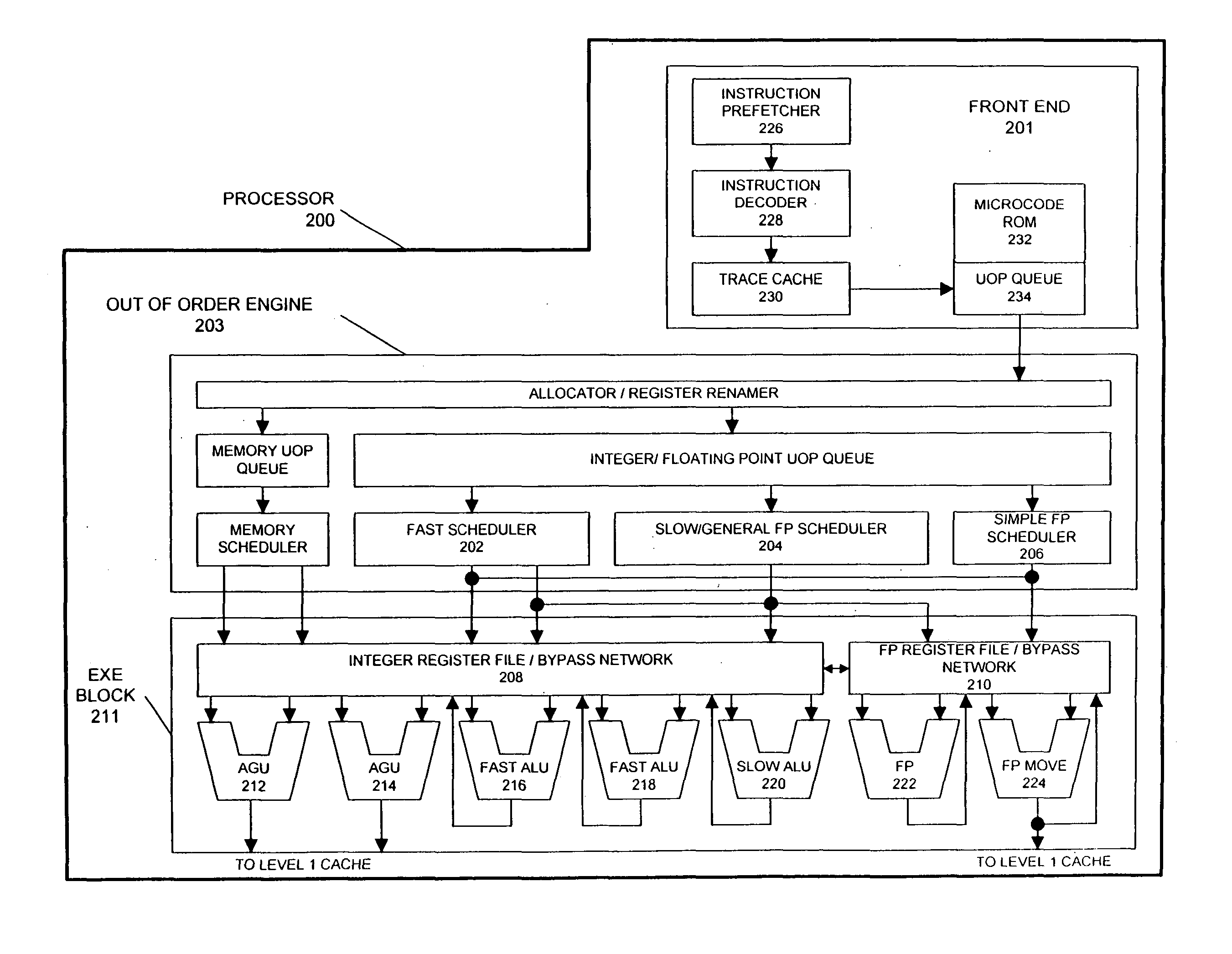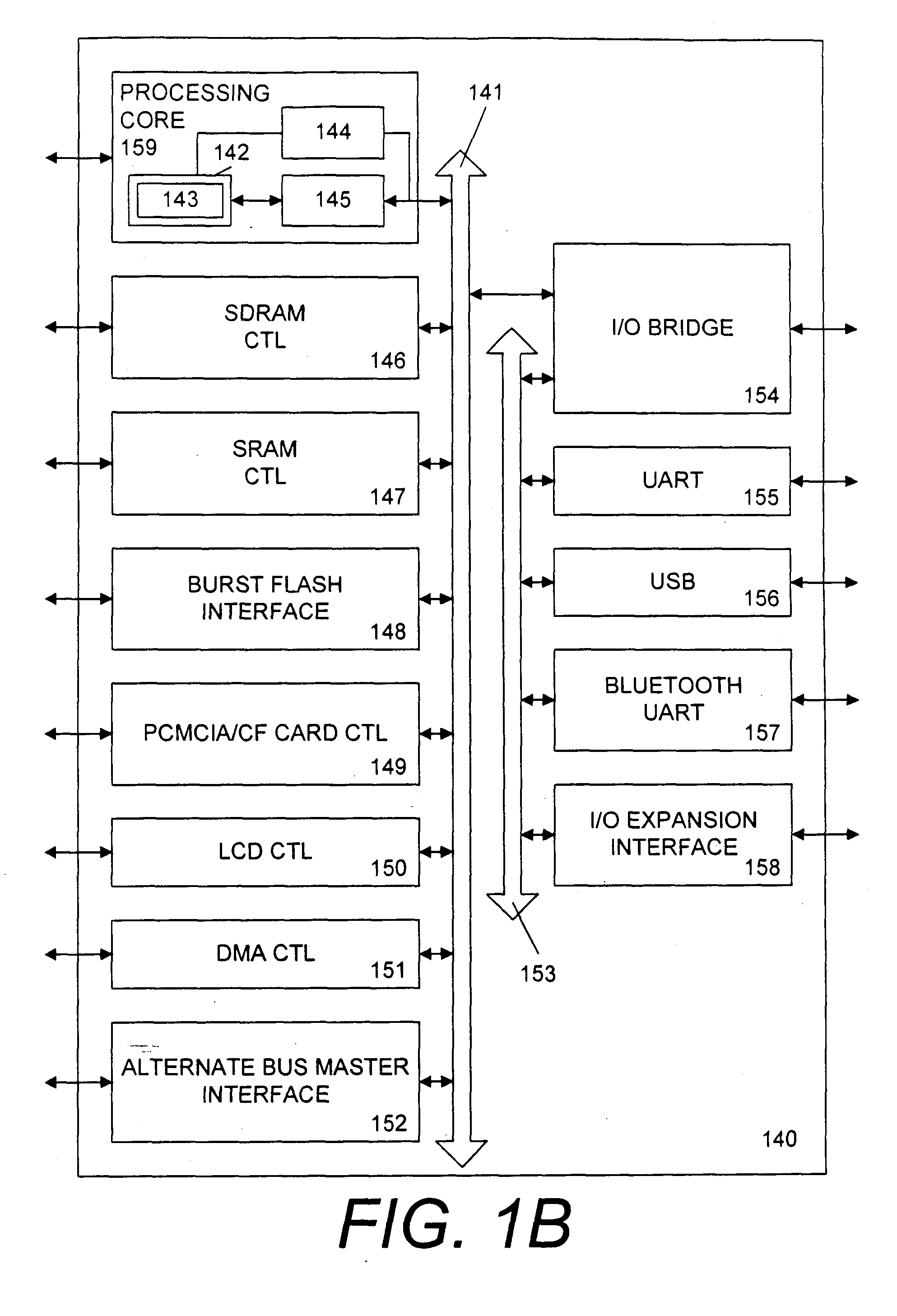Bitstream buffer manipulation with a SIMD merge instruction
a bitstream buffer and merge instruction technology, applied in the field of processing apparatuses, can solve the problems of increasing the number of clock cycles required to order data for arithmetic operations, increasing the number of clock cycles, and increasing the complexity of the situation
- Summary
- Abstract
- Description
- Claims
- Application Information
AI Technical Summary
Problems solved by technology
Method used
Image
Examples
first embodiment
[0074] Similarly, the shift right logic 424 shifts data segments for the second operand right by n number of segments. As the data segments are shifted right, 0's are shifted in from the left side to fill up the vacated spaces. The second data operand becomes: 0, 0, 0, H, G, F, E, D. The shifted operands are outputted from the shift left / right logic 422, 424, and merged together at the logical OR gate 426. The OR gate performs a logical or-ing of the data segments and provides a 64 bits wide resultant 408 of this embodiment. The or-ing together of “K, J, I, 0, 0, 0, 0, 0” with “0, 0, 0, H, G, F, E, D” generates a resultant 408 comprising eight bytes: K, J, I, H, G, F, E, D. This result is the same as that for the present invention in FIG. 4A. Note that for a count n 406 greater than the number of data elements in an operand, the appropriate number of 0's can appear in the resultant starting on the left side. Furthermore, if the count 406 is greater than or equal to the total number ...
second embodiment
[0077]FIG. 5B illustrates the operation of a shift right merge instruction in accordance with a The shift right merge instruction is accompanied at state I 550 by a count imm[y] of y bits, a first data operand MM1 [x] of x data segments, and as second data operand MM2[x] of x data segments. As with the example of the FIG. 5A, y is equal to 8 and x is equal to 8, wherein MM1 and MM2 each being 64 bits or 8 bytes wide. The first 504 and second 506 of this embodiment are packed with a number of equally sized data segments, each a byte wide in this case, “P 511, O 512, N 513, M 514, L 515, K 516, J 517, I 518” and H 521, G 522, F 523, E 524, D 525, C 526, B 1227, A 528”, respectively.
[0078] At state II 560, the shift count n 502 is used to shift the first 504 and second 506 operands. The count of this embodiment indicates the number of data segments to right shift the merged data. For this embodiment, the shifting occurs before the merging of the first 504 and second 506 operands. As a...
PUM
 Login to View More
Login to View More Abstract
Description
Claims
Application Information
 Login to View More
Login to View More - R&D
- Intellectual Property
- Life Sciences
- Materials
- Tech Scout
- Unparalleled Data Quality
- Higher Quality Content
- 60% Fewer Hallucinations
Browse by: Latest US Patents, China's latest patents, Technical Efficacy Thesaurus, Application Domain, Technology Topic, Popular Technical Reports.
© 2025 PatSnap. All rights reserved.Legal|Privacy policy|Modern Slavery Act Transparency Statement|Sitemap|About US| Contact US: help@patsnap.com



